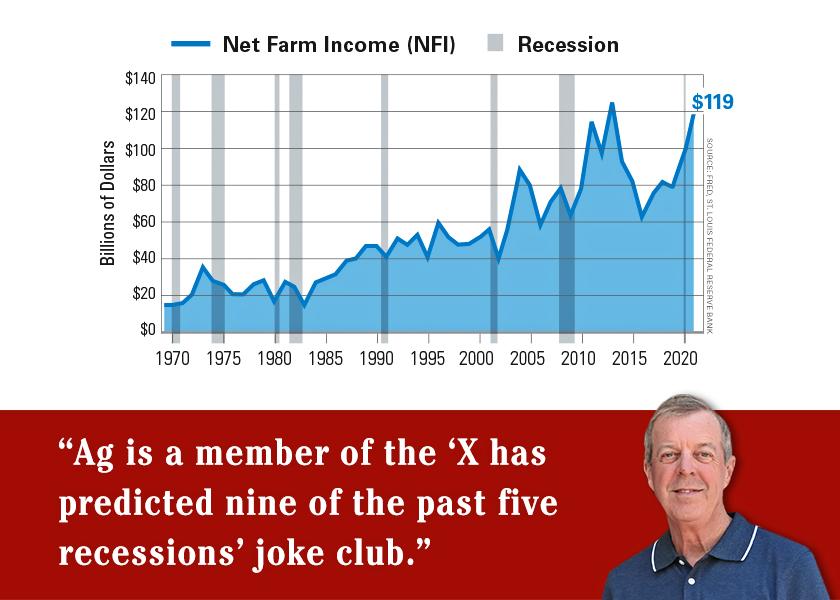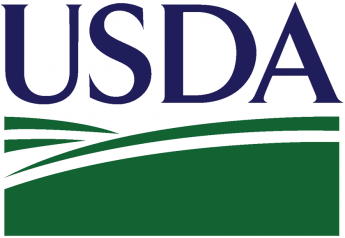John Phipps: Recession? What Recession?

Overnight, the grim financial threat facing the U.S. flipped from fading inflation to looming recession. Recessions always “loom” because you can’t verify them until they're underway or even over.
Recession definition: two consecutive quarters of economic (GDP) decline declared by a group nobody can actually name.
Initial GDP numbers are always subject to revision (like crop report acres). Recessions usually mean layoffs, less consumer spending, lower profits, and reports some dude “called it.” Since somebody is always warning of a recession, it’s just a matter of anointing and a book deal.
Recessions are bad news for politicians and inflation. Nothing stops runaway careers or prices like a slowing economy.
RECESSION OBLIVIOUS
Agriculture is not recession-proof, just recession-oblivious. Folk wisdom held that agriculture led our economy into recessions, i.e., if ag is faltering, the nation is heading for the dumpster. Or maybe not.
Consider the above FRED chart of net farm income with recessions shaded. To be sure, NFI often drops before and during a recession, but not always. But wilder drops can occur when GDP is doing OK.
Ag is a member of the “X has predicted nine of the past five recessions” joke club. If the dates and shading were missing, we’d struggle to replace them.
THE CAVEATS
There are caveats. NFI is an ag composite (wheat, bacon, lettuce, tomatoes, etc.) any of which could be having a tough year while NFI rises. In fact, some sectors are antagonistic, like grain (corn makers) and protein (corn eaters). NFI has production/sales time lag, so dates are wonky at best.
Ag products closest to consumers (eggs) feel more impact faster than commodities requiring processing (soybeans).
Droughts, disease, competition and flaky dictators hit NFI harder. There is one huge exception to this rule: Most farms depend on non-farm income to some extent. Recession-triggered rural layoffs can render many farms unviable.
Ag families experience recessions most tangibly through their non-farm personal connections, making them worth watching, regardless of farm economics.







